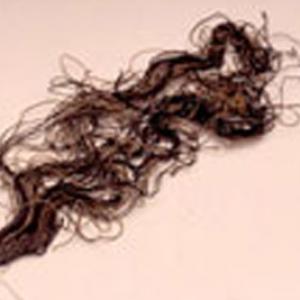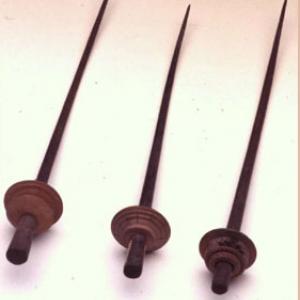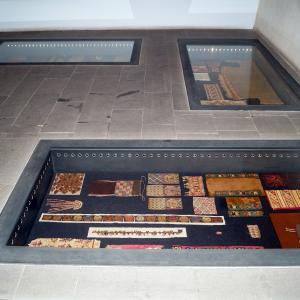The art of weaving is one of the most important cultural activities of the Andean area.
In the burials discovered along the desert coasts of southern Peru and northern Chile, thanks to their ideal environmental conditions, organic grave offers managed to be preserved. Among them it is possible to find weaving tools and magnificent fabrics in bright colours and with extremely elaborate designs in which the deceased were shrouded, so that they could use them in their afterlife.
The oldest artefacts recovered (mainly woven fabrics of vegetable textile fibres) plainly show that the Andean populations knew about weaving and spinning since 8000 B.C.
Using weaving techniques that were part of an ancient tradition, the Andean people were able to produce simple textiles made of one single type of fibre, as well as to weave elaborate fabrics, made of cotton and camel fibres, and dyed with natural colourings, using back-strap looms. Although after the Spanish conquest new Western techniques and materials were introduced, the Andean weaving tradition was kept alive for many more years, due to the deep meaning that weaving had in the Andean culture.
Traditional fabric has always meant more than just clothing: used in both daily situations and ceremonial occasions, it reflects the main phases of individual and social life, reveal ethnical identity, gender, age, social status, and conveys political and religious messages.
The whole ideological system of the Incas’ descendants that nowadays populate the Andean region has been passed down to them through the weaving art: through their fibres, colours and designs, fabrics convey mathematical and philosophical concepts that are at the heart of the Andean ideology.
(Text and technical analyses of the fabrics by Maria Chiara Barontini; Captions by Cristina Canepa)
Skein , 1250 - 200 B.C. (Ancon)

Skein , 1250 - 200 B.C. (Ancon)

Skein , 1250 - 200 B.C. (Ancon)

Skein , 1250 - 200 B.C. (Ancon)

Ball, 1250 - 200 B.C. (Ancón)

Ball, 1250 - 200 B.C. (Ancón)

Ball, 1250 - 200 B.C. (Ancón)

Ball, 1250 - 200 B.C. (Ancón)

Ball of yarn

Ball of yarn

Ball of yarn

Ball of yarn

Unfinished braid

Unfinished braid

Unfinished braid

Unfinished braid

Tupu, XII - II sec. b.C (Ancón)

Tupu, XII - II sec. b.C (Ancón)

Tupu, XII - II sec. b.C (Ancón)

Tupu, XII - II sec. b.C (Ancón)

Needle holder

Needle holder

Needle holder

Needle holder

Twenty-five Spindles

Twenty-five Spindles

Twenty-five Spindles

Twenty-five Spindles

Spindle

Spindle

Spindle

Spindle

Cloak brooches

Cloak brooches

Cloak brooches

Cloak brooches

Showcase

Showcase

Showcase

Showcase

Male coca pouch

Male coca pouch

Male coca pouch

Male coca pouch

Two ornithomorphic embroideries

Two ornithomorphic embroideries

Two ornithomorphic embroideries

Two ornithomorphic embroideries

Anthropomorphic figurine depicting a warrior

Anthropomorphic figurine depicting a warrior

Anthropomorphic figurine depicting a warrior

Anthropomorphic figurine depicting a warrior

Fabric fragment

Fabric fragment

Fabric fragment

Fabric fragment

Fabric fragment

Fabric fragment

Fabric fragment

Fabric fragment

Fabric fragment

Fabric fragment

Fabric fragment

Fabric fragment

Spindles

Spindles

Spindles

Spindles

Quipu

Quipu

Quipu

Quipu

Three fragments of fabric

Three fragments of fabric

Three fragments of fabric

Three fragments of fabric





